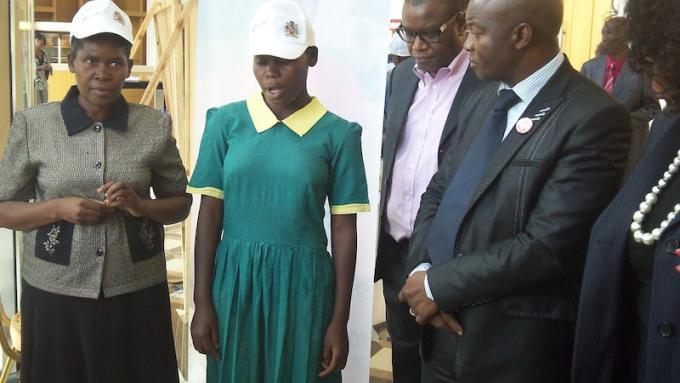Launch of the National Girls' Education Strategy
Save the Children has a lot to be proud of – it has played a major role in contributing to the recently launched National Girls Education Strategy and has helped build a network of support towards girls’ education.
On 6th May 2014, the National Girls Education Strategy was launched at the Bingu Conference Centre. In attendance were the likes of the UN Resident Coordinator, UNICEF’s Country Director, Civil Society Organisations (CSOs) and the Guest of Honor, the Honourable Minister of Education, Science and Technology, Dr. Lucius Kanyumba.
The strategy aims at advancing girls’ education and tackling the barriers that girls face in terms of their participation and access to education in comparison to boys. The Ministry of Education will guide stakeholders in Malawi with technical input aiming at increasing school enrollment of girls and creating suitable learning environments for their educational advancement.
The development of the strategy was pioneered by a project in Save the Children’s Basic Education programme known as ‘Building a Bright Future for Malawian Girls’. The project aimed at complementing the efforts of the Ministry of Education in ensuring equitable access to and improving the quality and relevance of education.
‘Building a Bright Future for Malawian Girls’ project was successful in many respects. With the use of Save the Children’s innovative strategies, the project managed to achieve results at scale in Traditional Authority (TA) Mlumbe, Zomba district. It expanded to 35 primary schools in its second phase after having initially started with 7 primary schools. This scaling up was made possible due to positive results attributed to the projects strategies, which include Teacher Aides (a female volunteer from the community whose role is to engage girls and the community in fostering their education), Bright Future Committees (an organ for community participation with the aim of motivating learners, especially Orphans and Vulnerable Children and girls to remain in school or go back to school in the event that they have already dropped out),. Individually and collectively, these strategies successfully managed to track student dropout rates, help teachers in the production of teaching and learning aids and assisted in curbing sexual abuse, early marriages and various hindrances to children and the right to education.
Save the Children held a conference towards the end of the project to share its lessons learnt from the project with various partners between 25th and 26th January 2012. A diverse group of 37 stakeholders involved in promoting girls’ education attended the event themed, ‘Building a Bright Future for Malawian Girls’, which consisted of the Ministry of Education, donors, International Non-Governmental Organisations (INGOs) and national, district and community level partners. The conference went beyond sharing and discussing Save the Children’s interventions. It provided an opportunity to other key players in girls’ education like UNICEF, Forum for Women Educationalist in Malawi (FAWEMA) and Action Aid to share their own interventions – creating a consensus on how to take further action towards enhancing girls’ education.
The propelling conference helped participating members unpack key issues affecting the quality of girls’ education in Malawi. It moved the strategic participants to come up with powerful resolutions for the future of girls including the formation of a civil society lobby network, the Malawi Girls Education Network and the most recently launched National Girls Education Strategy.
These strides made towards girls’ education positively reaffirms why we work hard and should continually remain pushing ourselves as an organisation in being the Voice, an Innovator, Building Partnerships and Achieving Results at Scale. We are reminded as to why as Save the Children, we endorsed the Theory of Change – which is to promote our common commitment to children’s rights, to differentiate ourselves from other INGOs and to recognize the mutually reinforcing approaches in how we work to create impact for children. We should be proud as an organisation because by putting what we stand for into practice, we are witnessing the fruits of our labour – impacting the lives of children.
Written by,
Bertha Chizuula, Literacy Boost Specialist
 Malawi
Malawi 